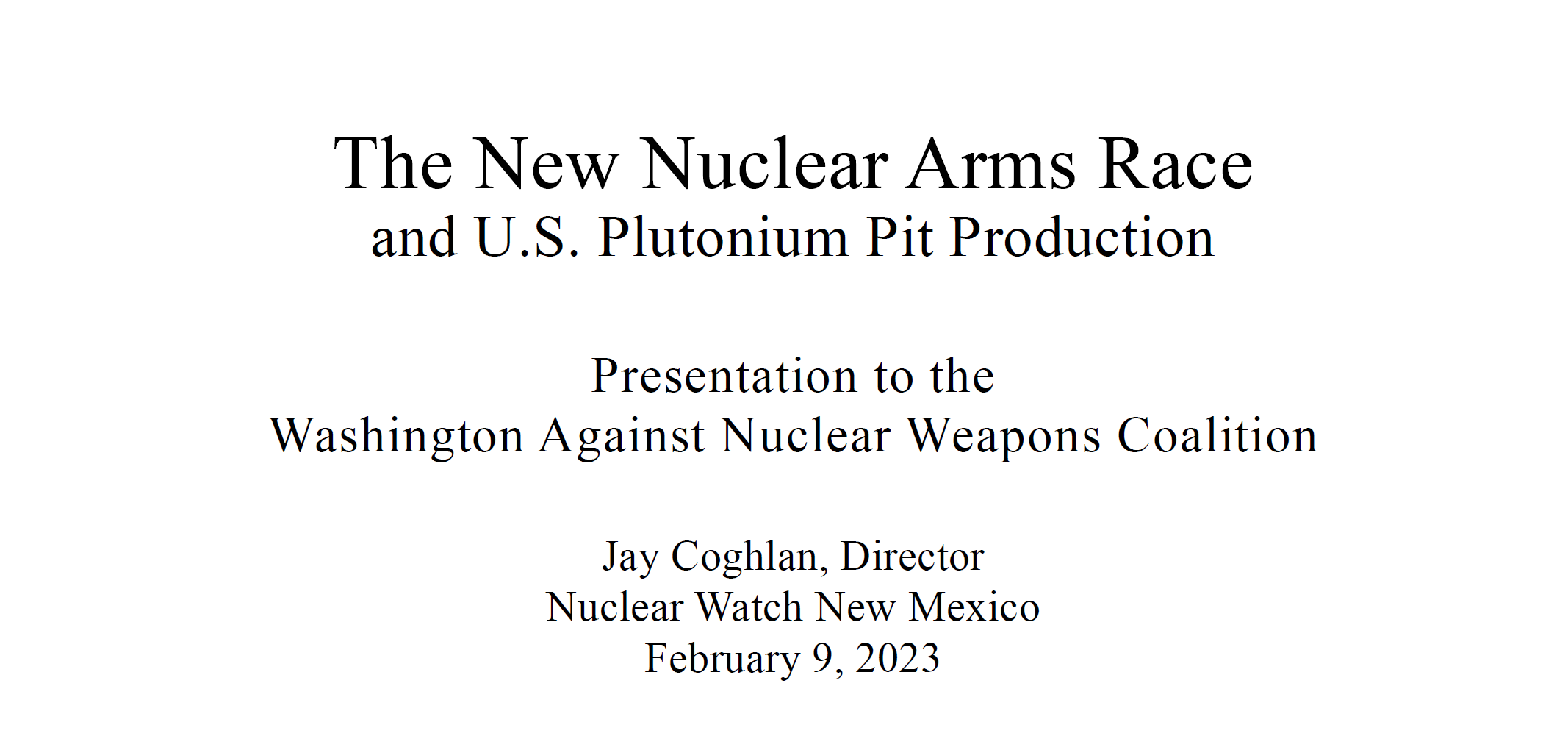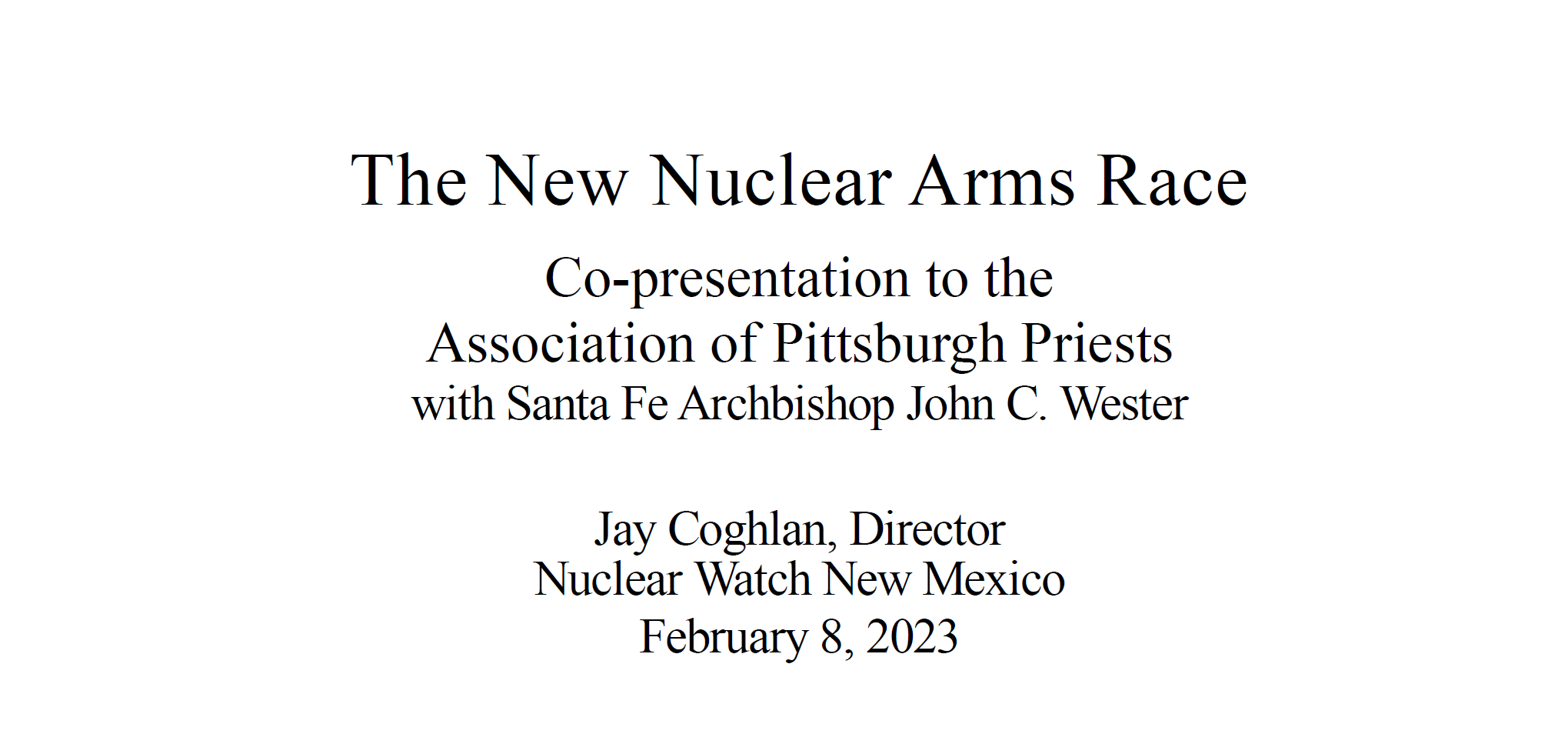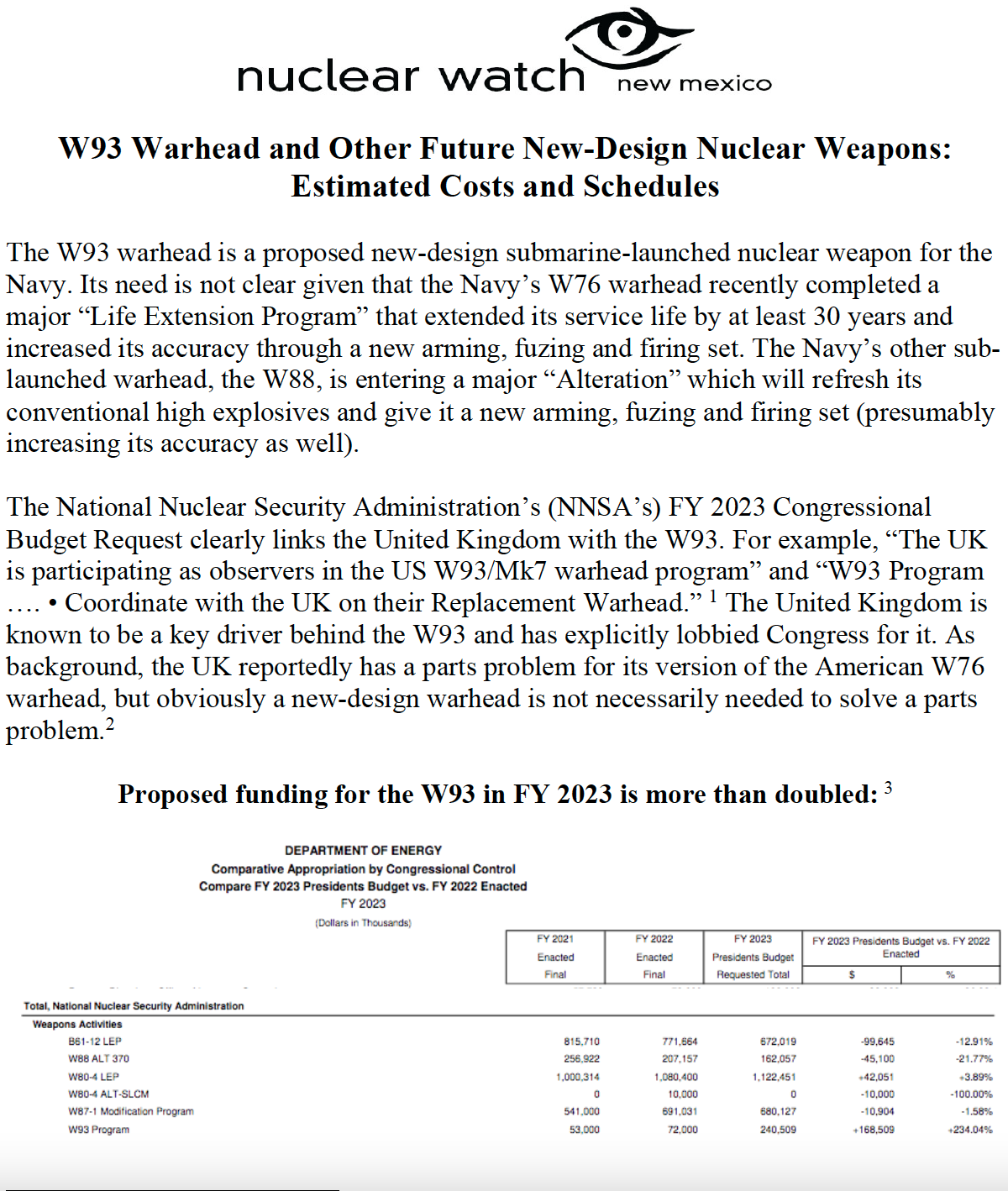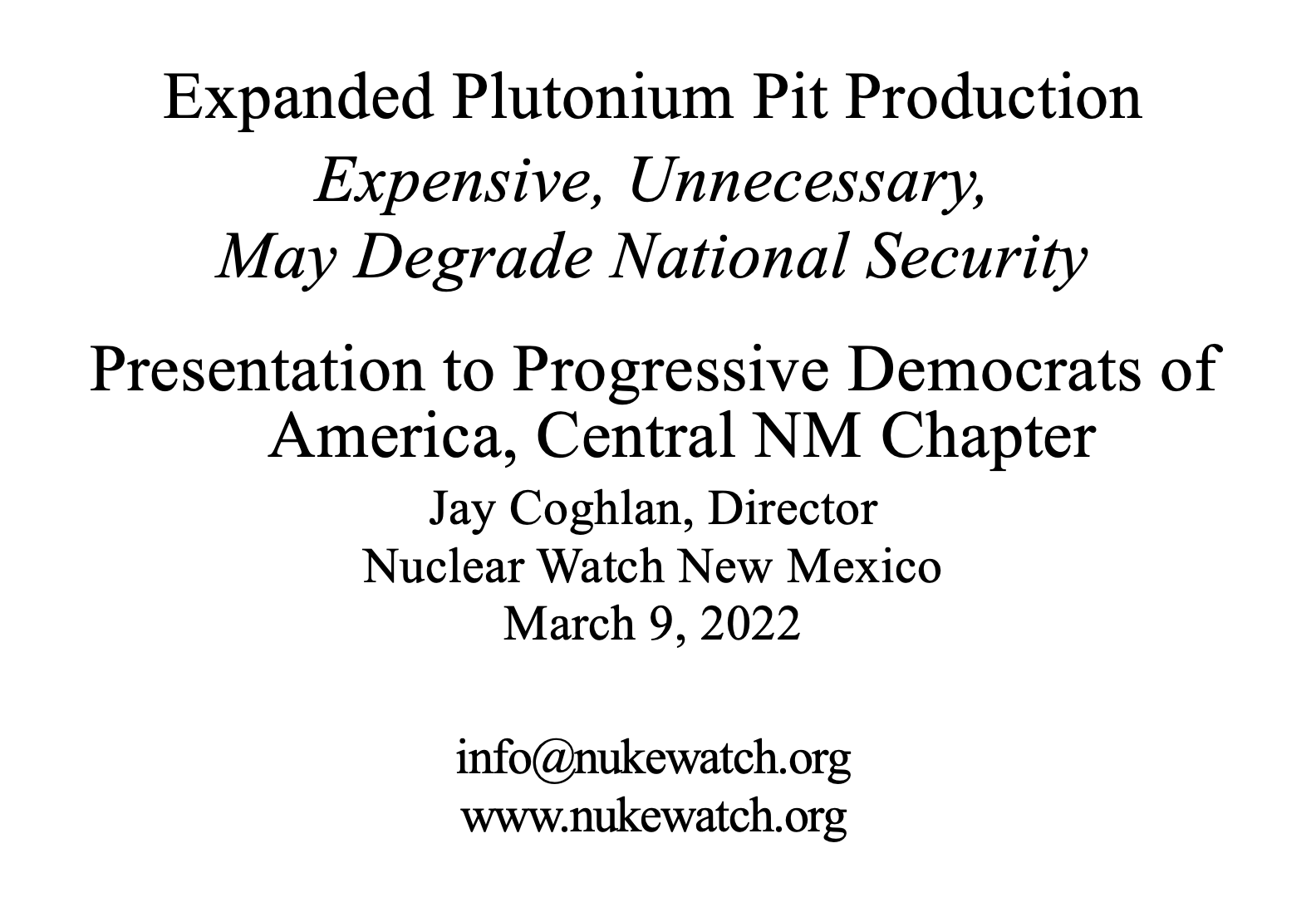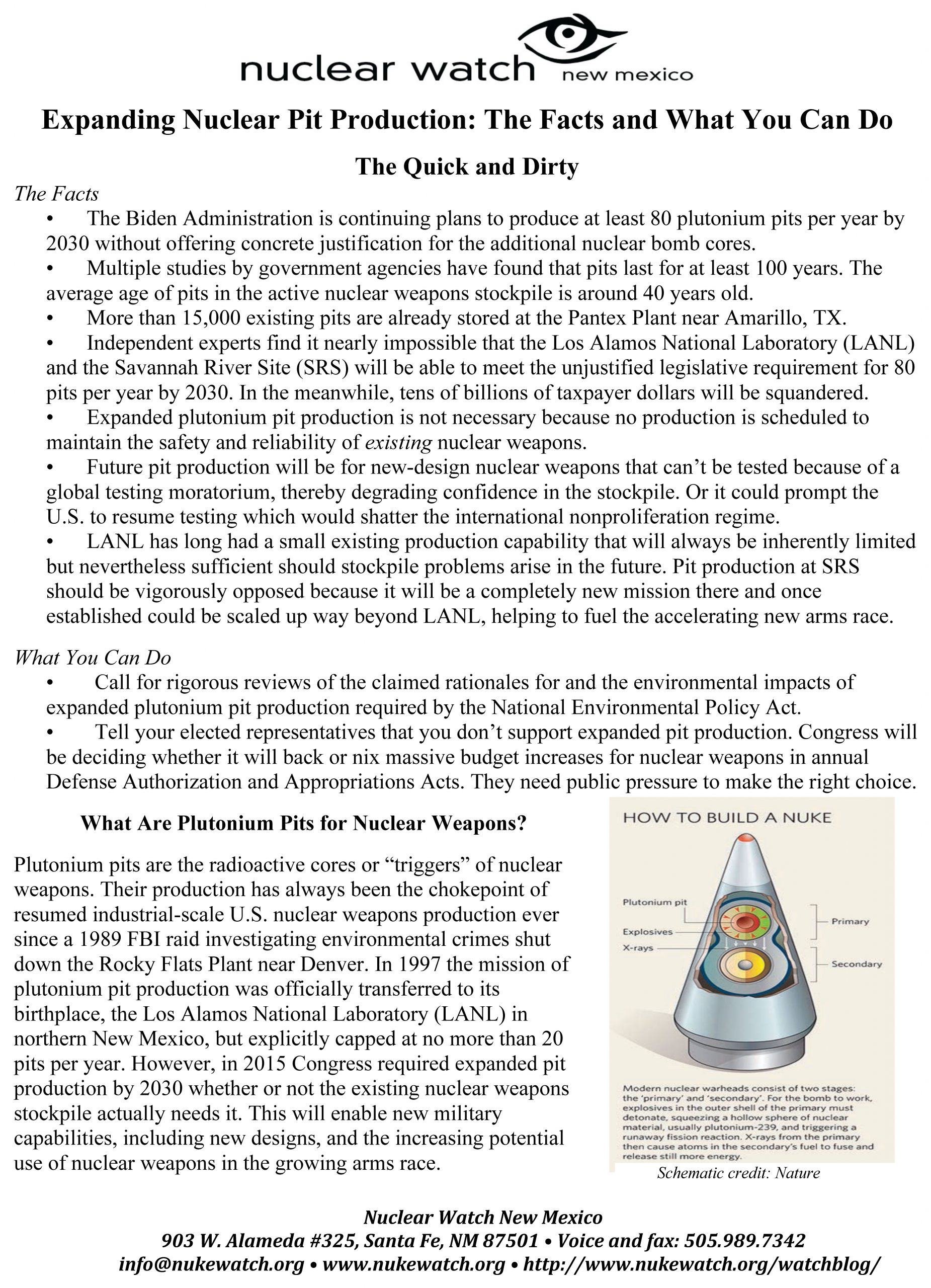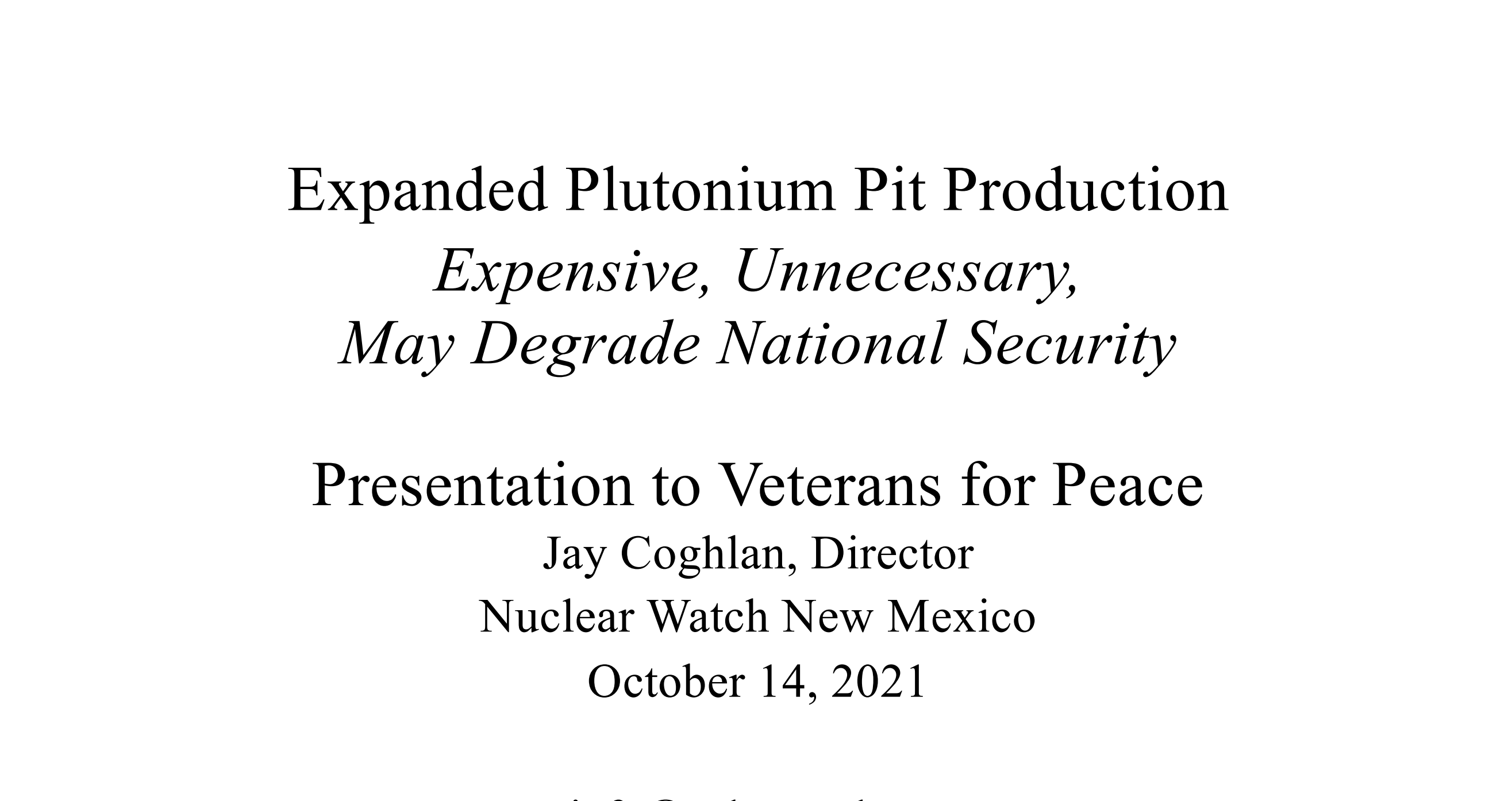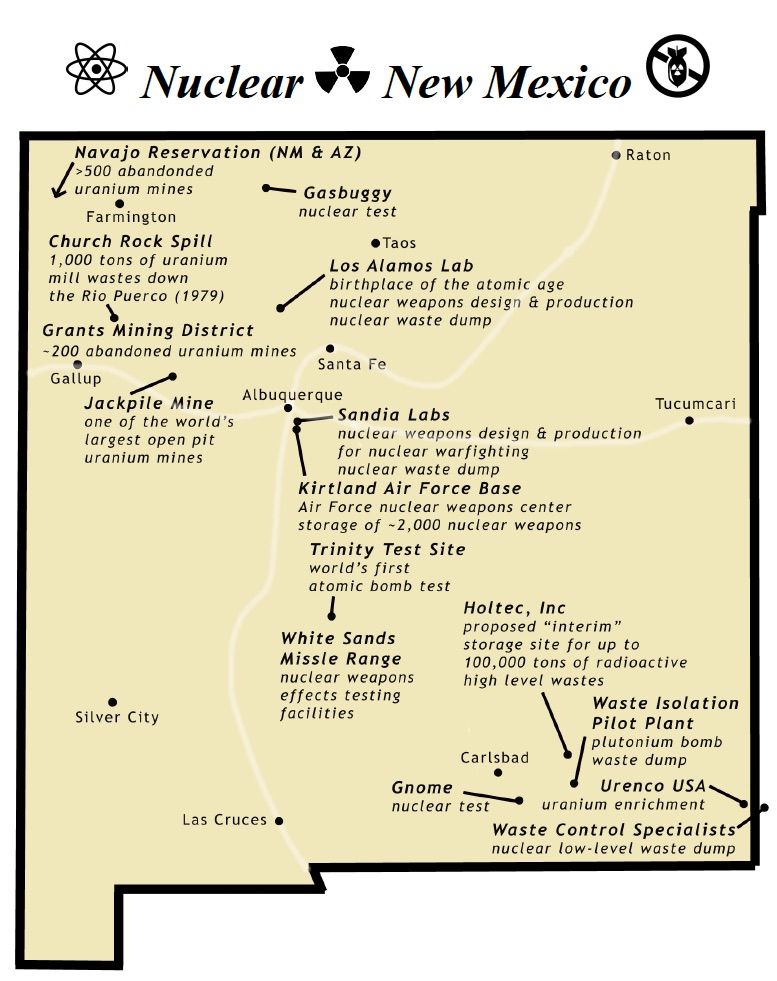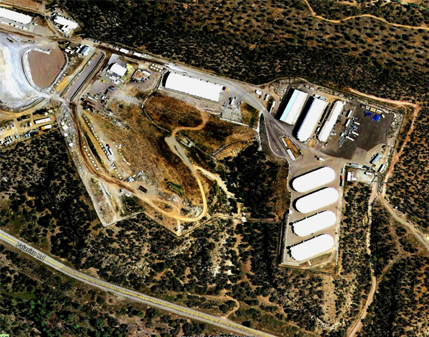Atomic Histories & Nuclear Testing
LANL’s Central Mission: Los Alamos Lab officials have recently claimed that LANL has moved away from primarily nuclear weapons to “national security”, but what truly remains as the Labs central mission? Here’s the answer from one of its own documents:
LANL’s “Central Mission”- Presented at: RPI Nuclear Data 2011 Symposium for Criticality Safety and Reactor Applications (PDF) 4/27/11
The Need for Independent Pit Aging Studies
June 16, 2022 | FACT SHEETS
Summary: The United States is aggressively expanding the production of plutonium “pit” bomb cores to at least 80 pits per year, which the Pentagon has called the number one issue in its $1.7 trillion plan to “modernize” nuclear forces. The average age of plutonium pits is around 40 years. Los Alamos Lab Director Thom Mason has said that “The best way to deal with this dilemma [of uncertainty about aging effects] is to take it off the table. We do that by making new pits, immediately.” Thus, he justifies spending tens of billions of dollars, creating additional occupational and public risks, generating more radioactive wastes with uncertain disposal pathways, fundamentally transforming the Lab into a nuclear weapons production site and fueling the increasingly dangerous new nuclear arms race.
But does independent review of pit aging data support this need to immediately produce new pits? The answer is no given that independent experts concluded in 2006 that pits last at least a century with no determined end date. Further, no future pit production is scheduled to maintain the safety and reliability of the existing nuclear weapons stockpile – it is all for speculative new designs which could raise reliability issues or even prompt the U.S. to resume testing.
Why Funding for the SLCM Nuclear Warhead Should Be Deleted
June 6, 2022 | FACT SHEETS
Introduction: In 1991, in response to the ongoing collapse of the Soviet Union, President George H. Bush ordered the withdrawal of all nuclear-armed sea-launched cruise missiles (SLCMs) from U.S. surface ships and submarines. In 2018 President Trump’s Nuclear Posture Review proposed to redeploy SLCMs on Virginia-class attack submarines, saying they would provide the United States with “a needed non-strategic regional presence” that would address “the increasing need for flexible and low-yield options.”1 Congress subsequently approved $15.2 million in FY 2022 funding for the Navy’s new cruise missile and nuclear warhead.
In March 2022 President Biden transmitted a new classified Nuclear Posture Review to Congress that reportedly canceled the Sea-Launched Cruise Missile. In parallel, his proposed FY 2023 budget for the National Nuclear Security Administration (NNSA) has no funding for the SLCM nuclear warhead. This has prompted some congressional pushback, with one suggested compromise being continuing modest research funding. But as a Congressional Research Service analysis put it: “The Navy indicated that the program was “cost prohibitive and the acquisition schedule would have delivered capability late to need.”

________________________________
Click the image to view and download this large printable map of DOE sites, commercial reactors, nuclear waste dumps, nuclear transportation routes, surface waters near sites and transport routes, and underlying aquifers. This map was prepared by Deborah Reade for the Alliance for Nuclear Accountability.
Nuclear Watch Interactive Map – U.S. Nuclear Weapons Complex
Waste Lands: America’s Forgotten Nuclear Legacy
The Wall St. Journal has compiled a searchable database of contaminated sites across the US. (view)
Related WSJ report: https://www.wsj.com
A Tale of Two Consent Orders and What Is Needed
On March 1, 2005, after arduous negotiations and threats of litigation, the New Mexico Environment Department (NMED), Department of Energy (DOE), and Los Alamos National Laboratory (LANL) entered into a Consent Order specifying the schedule for investigation and cleanup of the Lab’s hundreds of contaminated sites.
In June 2016, NMED and LANL signed a new Consent Order that solved many of LANL’s problems by removing fines and enforceable schedules.
Read/Download the full fact sheet pdf HERE
Expanded Plutonium Pit Production for U.S. Nuclear Weapons
Plutonium pits are the radioactive cores or “triggers” of nuclear weapons. Their production has always been a chokepoint of resumed industrial-scale U.S. nuclear weapons production ever since a 1989 FBI raid investigating environmental crimes shut down the Rocky Flats Plant near Denver.Continue reading
Clean Up Area G: Hundreds of Jobs Could Be Created that Protect the Environment
Summary
New Mexicans should push their politicians to vigorously lobby for comprehensive cleanup at the Los Alamos National Laboratory (LANL). Unlike nuclear weapons programs, cleanup would be a win-win that permanently protects the environment while creating hundreds of high paying jobs. Continue reading
Expanded Plutonium Pit Production at LANL Will Not Result in Significant Positive Effect On Job Creation and the Regional Economy
The National Nuclear Security Administration’s own documents have explicitly stated that expanded pit production would have no significant positive effect on job creation and the regional economy of northern New Mexico. Nuclear Watch argues that expanded plutonium pit production could actually have negative effect if it blocks other economic alternatives such as comprehensive cleanup, which could be the real job producer.Continue reading


